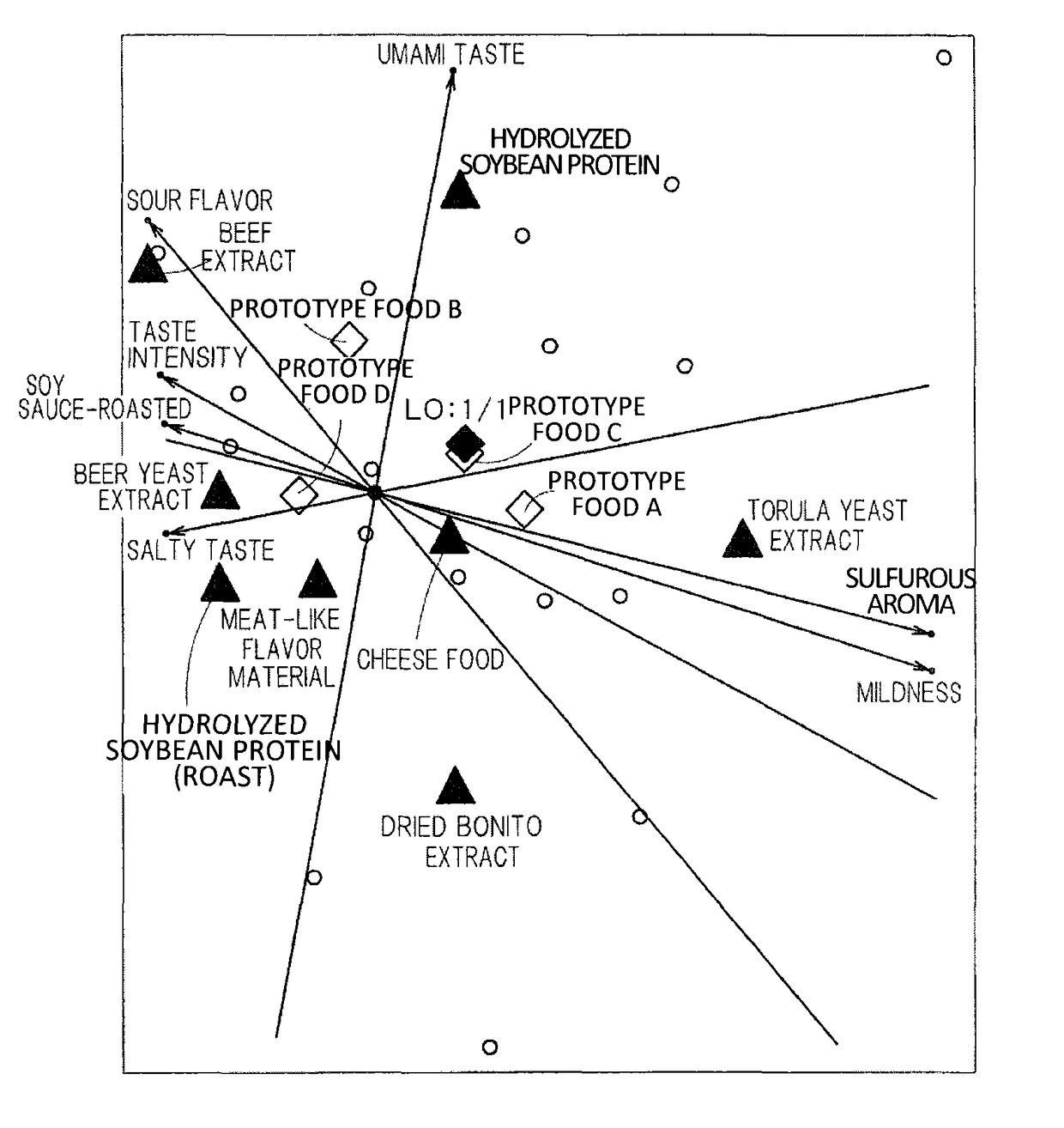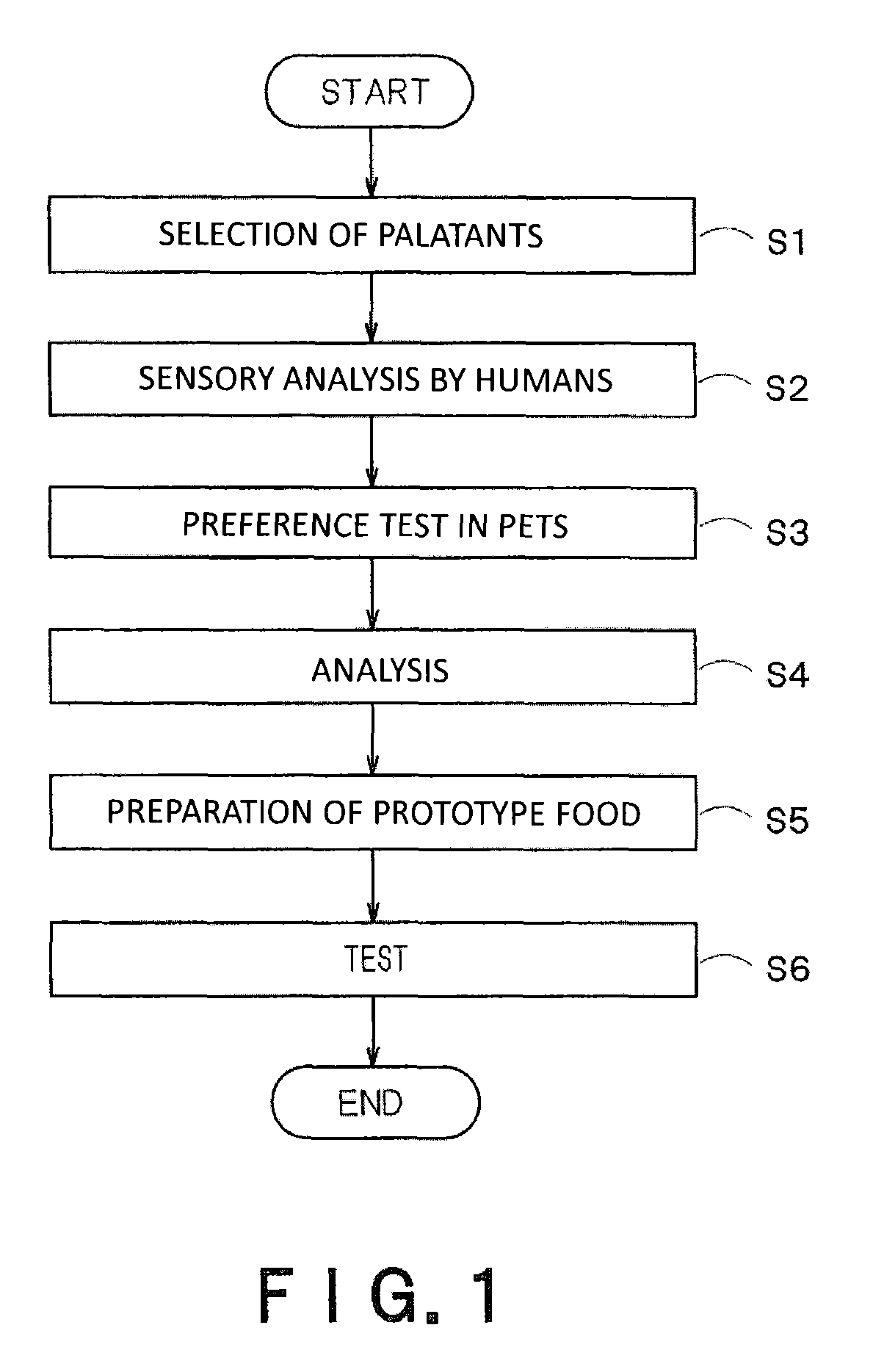Method for evaluating food preference of pets
a pet food and preference technology, applied in the field of pet food preference evaluation, can solve the problems of not always efficient operation, does not address predication, and eats pet food considered to give humans sometimes a feeling of rejection, and achieves the effects of minimizing the difference between the sensory analysis score and the optimal score, and reducing the risk of food poisoning
- Summary
- Abstract
- Description
- Claims
- Application Information
AI Technical Summary
Benefits of technology
Problems solved by technology
Method used
Image
Examples
first embodiment
[0050]FIG. 1 is a flow chart showing the procedures of evaluating food preference of pets according to one embodiment of the present invention. The preference evaluation can determine at least one sensory attribute that affects food preference of a pet which is a predetermined subject for evaluation (hereinbelow simply referred to as a pet). The preference evaluation can also determine which of the sensory attributes contribute to the food preference and how a pet likes the contributing attributes to be modified one another.
[0051]First, at least one palatant contained in a pet food is selected (Step S1). The palatants can be seasonings, seasoning materials, or simply, materials. The palatants can possibly adjust sensory attributes of a pet food or are involved in sensory attributes. Examples of the palatants include livestock products (such as meat, fish, egg, and milk), meat extracts (such as beef, pork, and chicken extracts), protein hydrolysates (those obtained by treating animal...
second embodiment
[0093]The sensory attributes contributing to the preference of pets and their estimated optimal scores could be expressed by sensory expression by humans in the first embodiment. In the second embodiment, a pet food is improved based on the contributing sensory attributes and their predicted optimal scores thus obtained. In the second embodiment, the invention relates to a method for making pet food base materials more preferred by pets. In this embodiment, palatants are added to a pet food to adjust sensory attributes of the food.
[0094]The outline of the general pet food manufacturing method is described below. First, raw materials that have been roughly crushed into a certain particle size in advance are supplied to an extruder and subjected to extrusion molding to prepare a base material (kibbles). The base material is coated with oil / fat and then additives are added. Examples of the additives include antioxidants and palatants. The method for improving such a pet food according ...
PUM
| Property | Measurement | Unit |
|---|---|---|
| body weight | aaaaa | aaaaa |
| distances | aaaaa | aaaaa |
| w/w | aaaaa | aaaaa |
Abstract
Description
Claims
Application Information
 Login to View More
Login to View More - R&D
- Intellectual Property
- Life Sciences
- Materials
- Tech Scout
- Unparalleled Data Quality
- Higher Quality Content
- 60% Fewer Hallucinations
Browse by: Latest US Patents, China's latest patents, Technical Efficacy Thesaurus, Application Domain, Technology Topic, Popular Technical Reports.
© 2025 PatSnap. All rights reserved.Legal|Privacy policy|Modern Slavery Act Transparency Statement|Sitemap|About US| Contact US: help@patsnap.com



